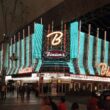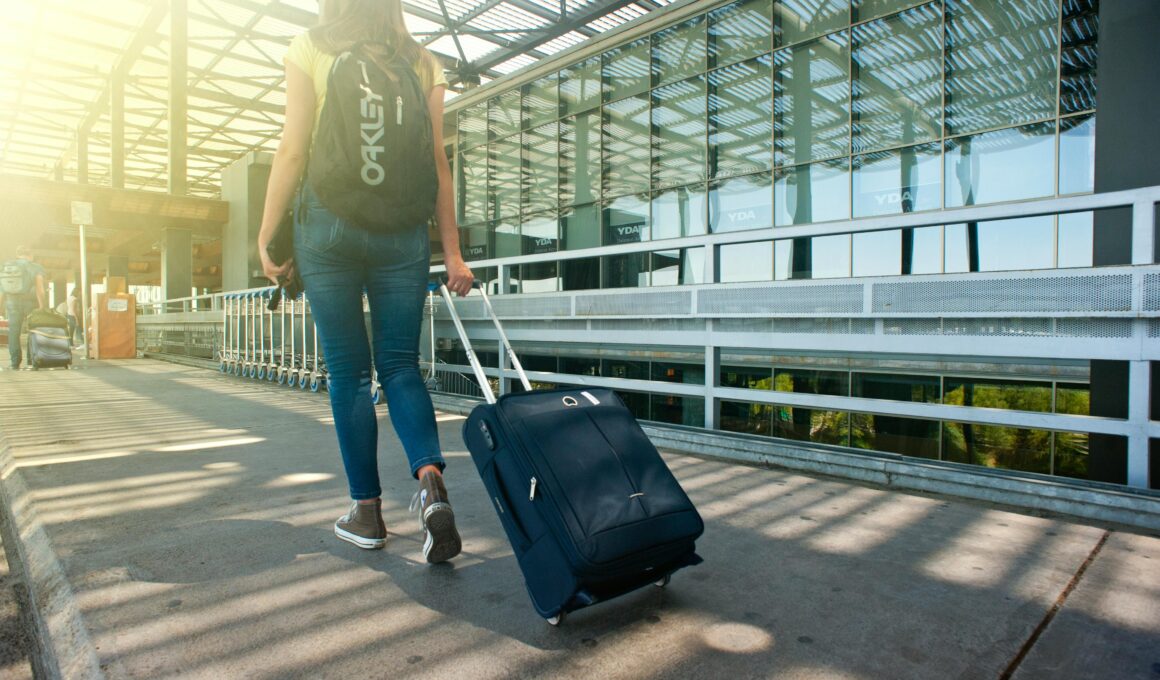Each year, millions of travelers stream through Harry Reid International Airport’s (LAS) terminals, their sights often set on the glittering Strip or the promise of a high-stakes adventure. Yet, beneath the surface of this bustling transportation hub lies a treasure trove of quirky, fascinating, and often overlooked features that elevate LAS from a mere transit point to a destination in its own right. Far from the typical airport experience of long lines and sterile corridors, LAS weaves a narrative that mirrors the audacious spirit of Las Vegas itself, blending practicality with whimsy in ways that surprise and delight. Let’s embark on a journey to uncover the hidden gems and intriguing stories that make Harry Reid International Airport a standout among global airports.
A Gamble Before You Go: Slot Machines in the Sky
One of the most iconic and immediately noticeable features of LAS is its collection of over 1,400 slot machines scattered across Terminals 1 and 3. This makes LAS one of only two airports in the United States—alongside Reno-Tahoe International Airport—where travelers can try their luck before even leaving the terminal. The slots, operated by Michael Gaughan’s Airport Slot Concession, Inc., are more than a novelty; they’re a cultural touchstone that encapsulates the Las Vegas ethos. Whether you’re a departing visitor squeezing in one last spin or an arriving guest eager to dive into the city’s gambling culture, these machines offer an instant taste of Vegas flair. In 2024, these slots generated over $39 million in revenue, a portion of which funds airport improvements, including terminal upgrades and enhanced passenger amenities. The odds may mirror those of the casinos downtown, but the sheer novelty of pulling a lever while waiting for your baggage is a uniquely Vegas experience that sets LAS apart. For many, it’s the first hint that this airport is no ordinary stopover.
Art in Transit: A Gallery in the Terminals
While slot machines capture the city’s playful side, LAS also showcases a surprising commitment to art and culture, transforming its terminals into an unexpected gallery. Far from the generic posters and advertisements that dominate most airports, LAS features an impressive collection of public art installations that invite travelers to pause and engage with their surroundings. From vibrant sculptures to thought-provoking photography exhibits, these works add a layer of aesthetic richness to the travel experience. The airport’s website even offers a detailed guide to its art collection, encouraging passengers to embark on a self-guided tour during layovers.
Among the standout pieces is Vaquero by Luis Jiménez, a bold fiberglass sculpture of a cowboy on horseback located near the Terminal 1 departures area. Its vivid colors and dynamic composition pay homage to the region’s Western heritage, offering a striking visual anchor for travelers. In Terminal 3, Mirare by Stu Schechter captivates with its double-airplane sculpture, a whimsical tribute to the magic of flight that seems to hover in mid-air. Other installations, such as rotating photography exhibits showcasing Nevada’s natural beauty and cultural history, add a sense of place to the transient space. These artistic touches not only elevate the airport’s ambiance but also reflect Las Vegas’s growing reputation as a hub for creativity and culture, a fact often overshadowed by its glitzy reputation.
A Nod to History: The Howard W. Cannon Aviation Museum
For those with a passion for aviation, LAS harbors a hidden gem that many travelers rush past: the Howard W. Cannon Aviation Museum. Tucked away on Level 2 of Terminal 1, above the baggage claim area, this free museum offers a captivating dive into Southern Nevada’s aviation history. Spanning from the rudimentary flights of the 1920s to the sleek jet age of the mid-20th century, the museum’s exhibits include artifacts, photographs, and interactive displays that chronicle the region’s pivotal role in shaping modern air travel. Highlights include vintage pilot uniforms, early navigational equipment, and stories of Las Vegas’s emergence as a key stopover for transcontinental flights.
One particularly evocative display features a 1958 Cessna 172, painted with the word “Hacienda,” suspended above the baggage claim area. This plane, while not part of the Hacienda Hotel’s famed private fleet, was sponsored by the hotel for a record-breaking endurance flight in 1958, during which pilots John Cook and Robert Timm kept it aloft for 64 days, refueling mid-air. The museum also sheds light on the Hacienda’s ambitious 1960s venture: a 30-plane fleet designed to ferry gamblers to Las Vegas from across the country. These planes, equipped with pianos, bars, and plush interiors, epitomized the city’s extravagant approach to hospitality. Though the fleet is long gone, the museum’s exhibits preserve this colorful chapter, offering a glimpse into an era when Las Vegas redefined air travel as an extension of its entertainment empire. For travelers unaware of this free attraction, the museum is a reminder that LAS is as much a keeper of history as it is a conduit for modern travel.
Wellness in the Desert: Fitness and Relaxation at LAS
In a city synonymous with indulgence, LAS surprises with its dedication to health and wellness, offering amenities that cater to travelers seeking balance amidst the chaos of travel. One of the most unexpected facilities is ZEROlevel Fitness & Wellness, a 13,000-square-foot gym located below the baggage claim area in Terminal 1. This state-of-the-art fitness center is a rarity among airports, providing travelers with access to cardio machines, weightlifting equipment, group fitness classes, and even a spa for massages and relaxation. Open 24/7, the gym caters to passengers with long layovers, early arrivals, or a desire to maintain their fitness routines on the road. Day passes are available, making it accessible for transient visitors, while the spa’s services, including facials and deep-tissue massages, offer a luxurious way to unwind.
For those needing a quieter form of respite, ZEROlevel also houses “Sleep Rooms,” private suites available for hourly rental. Equipped with comfortable beds, ambient lighting, and soundproofing, these rooms provide a sanctuary for travelers facing delays or red-eye flights. The Sleep Rooms are a testament to LAS’s commitment to passenger comfort, offering a practical yet indulgent solution to the fatigue of air travel. Together, the fitness center and Sleep Rooms create an oasis of calm in an environment often associated with hustle and bustle, proving that LAS caters to more than just the thrill-seekers.
Family-Friendly Features: Play Areas and Nursing Suites
Recognizing that travel can be challenging for families, LAS goes above and beyond to accommodate parents and children alike. At the D Gates, a dedicated kids’ play area offers an aviation-themed space where young travelers can burn off energy before boarding. Interactive features, such as a mini-control tower, a mock jet engine, and climbable structures, spark imagination and engagement. Telescopes positioned near the windows allow children to watch planes taxi and take off, fostering a sense of wonder about air travel. The play area’s thoughtful design ensures that it’s both entertaining and safe, giving parents a moment to relax while their kids explore.
For nursing mothers, LAS provides three Mamava nursing suites strategically located in Terminals 1 and 3, as well as near the D Gates. These private, pod-like spaces are equipped with comfortable seating, power outlets, and smart Bluetooth locks accessible via a mobile app, ensuring convenience and security. The suites are cleaned regularly and designed with hygiene in mind, offering a dignified alternative to crowded restrooms or open seating areas. These family-friendly amenities reflect LAS’s commitment to inclusivity, ensuring that travelers of all ages and needs feel supported and valued.
Paws and Planes: Pet-Friendly Provisions
LAS extends its hospitality to four-legged travelers with a network of pet relief areas designed for service animals and pets. Indoors, Terminal 1 offers relief areas near Door 30 and Door 13, while Terminal 3 has a designated space near the curbside on Level 0. Outdoor relief areas are also available, complete with waste bags, water stations, and shaded seating for pet owners. These facilities ensure that animals remain comfortable during layovers or long travel days, a thoughtful touch that aligns with LAS’s broader mission to enhance the passenger experience. For travelers with pets, these areas provide peace of mind, allowing them to focus on their journey without worrying about their companions’ needs.
Architectural Oddities: The Case of the Missing Terminal 2
The layout of LAS holds a curious quirk that often puzzles first-time visitors: the absence of a Terminal 2. Originally, the airport operated with Terminals 1, 2, and 3, but in 2016, Terminal 2 was demolished to make way for a new air traffic control tower and Terminal Radar Approach Control facility. Completed in 2017, the new tower stands at 352 feet, making it the second-tallest control tower in the United States, surpassed only by Atlanta’s Hartsfield-Jackson Airport. The decision to forgo rebuilding Terminal 2 has left the airport with a non-sequential numbering system, with Terminals 1 and 3 handling all passenger traffic. This architectural anomaly, while minor, adds a layer of intrigue to the airport’s story, prompting curious travelers to wonder about the gap in its terminal sequence.
Staying Active: The Fly Fit Program
For passengers with extended layovers or a desire to stay active, LAS offers the innovative “Fly Fit” program, a wellness initiative endorsed by the American College of Sports Medicine. The program encourages travelers to explore the airport’s terminals via designated walking paths, with maps available on the airport’s website outlining routes of varying lengths. These paths wind through less crowded areas, offering scenic views of art installations, tarmac activity, and terminal architecture. Ranging from short loops to longer circuits, the routes cater to different fitness levels and time constraints, transforming the airport into an impromptu fitness trail. The Fly Fit program not only promotes physical health but also provides a productive way to pass time, turning the often-dreary wait for a flight into an opportunity for exploration and exercise.
A Microcosm of Vegas: Blending Function with Flair
Harry Reid International Airport is far more than a functional hub for arrivals and departures; it’s a vibrant extension of Las Vegas’s identity, where the practical meets the playful, and the expected gives way to the extraordinary. From the clatter of slot machines to the quiet elegance of its art installations, from the historical depth of the Howard W. Cannon Aviation Museum to the modern comforts of ZEROlevel Fitness and Mamava suites, LAS weaves a tapestry of experiences that reflect the city’s multifaceted charm. Its pet relief areas, kids’ play spaces, and Fly Fit program further underscore its commitment to inclusivity and passenger well-being, while quirky historical touches, like the Hacienda Cessna and the missing Terminal 2, add layers of intrigue.
For travelers passing through LAS, the airport offers a chance to engage with Las Vegas in unexpected ways. Whether you’re spinning a slot machine, admiring a sculpture, exploring aviation history, or stretching your legs on a Fly Fit walk, LAS invites you to look beyond the departure boards and discover its hidden charms. It’s a place where the journey itself becomes a destination, proving that even in the most transient of spaces, there’s room for wonder, whimsy, and a touch of Vegas magic. So, the next time you find yourself at Harry Reid International Airport, take a moment to wander, explore, and uncover the stories that make this gateway truly one of a kind.





